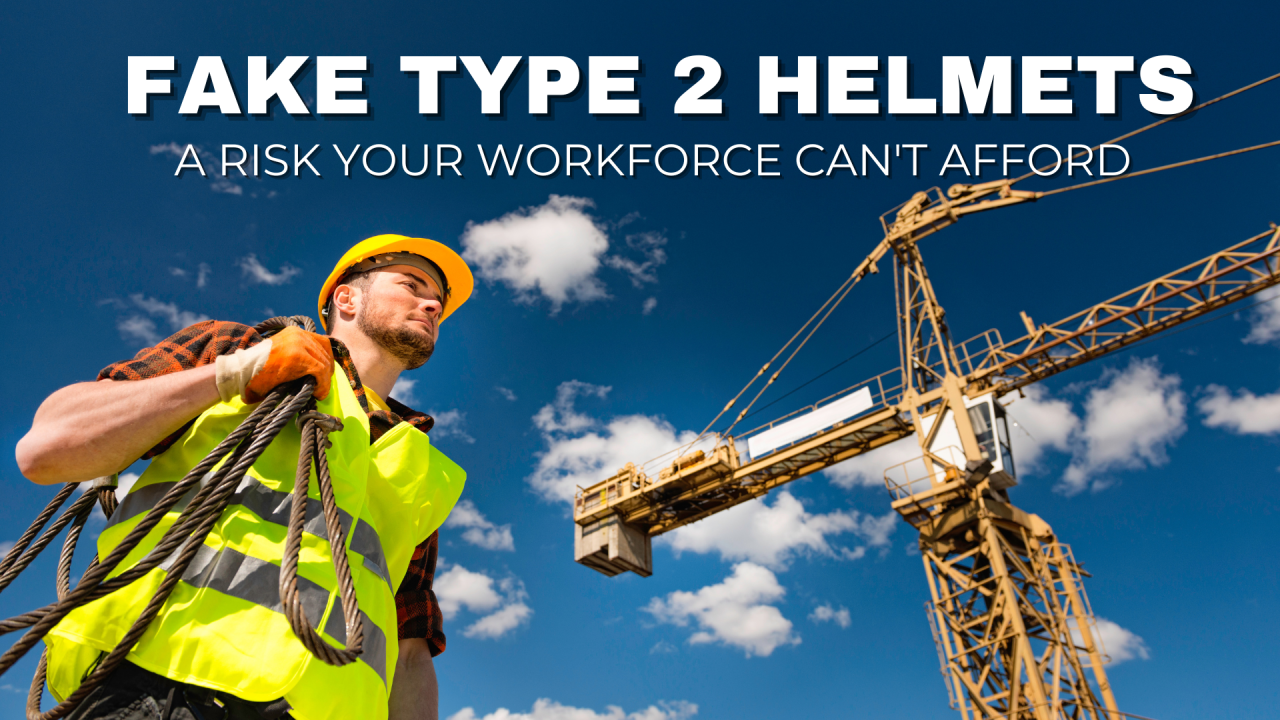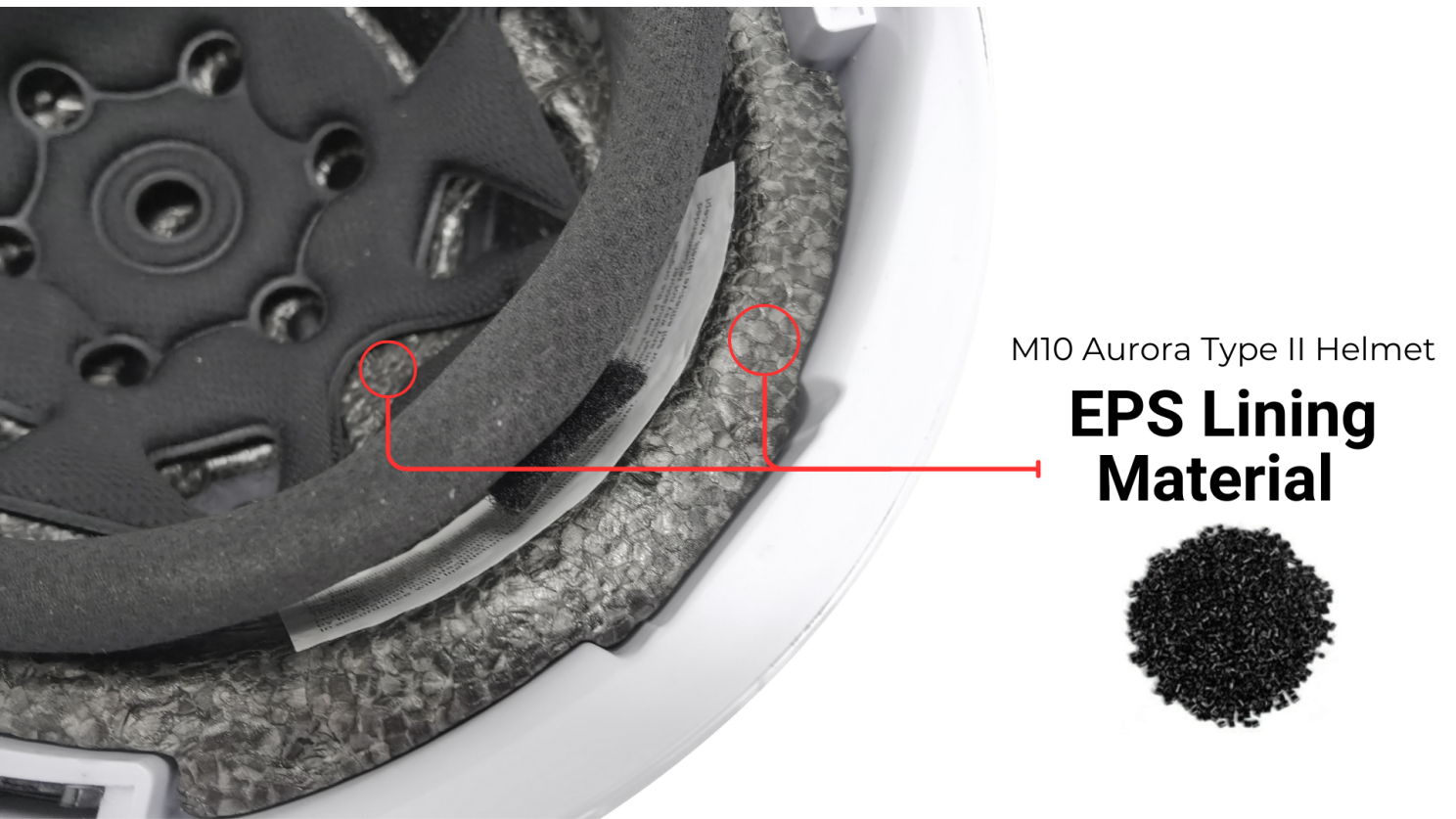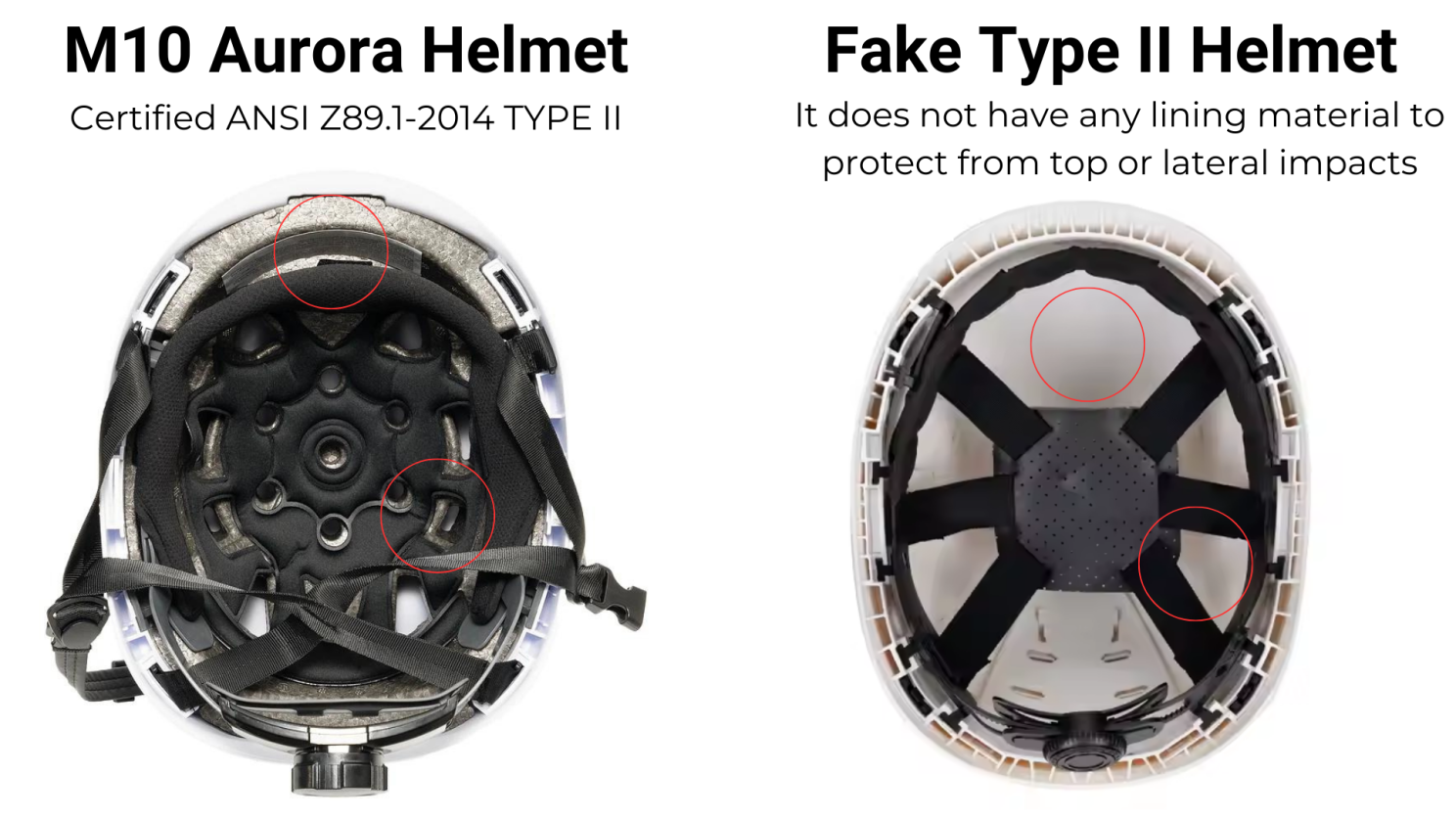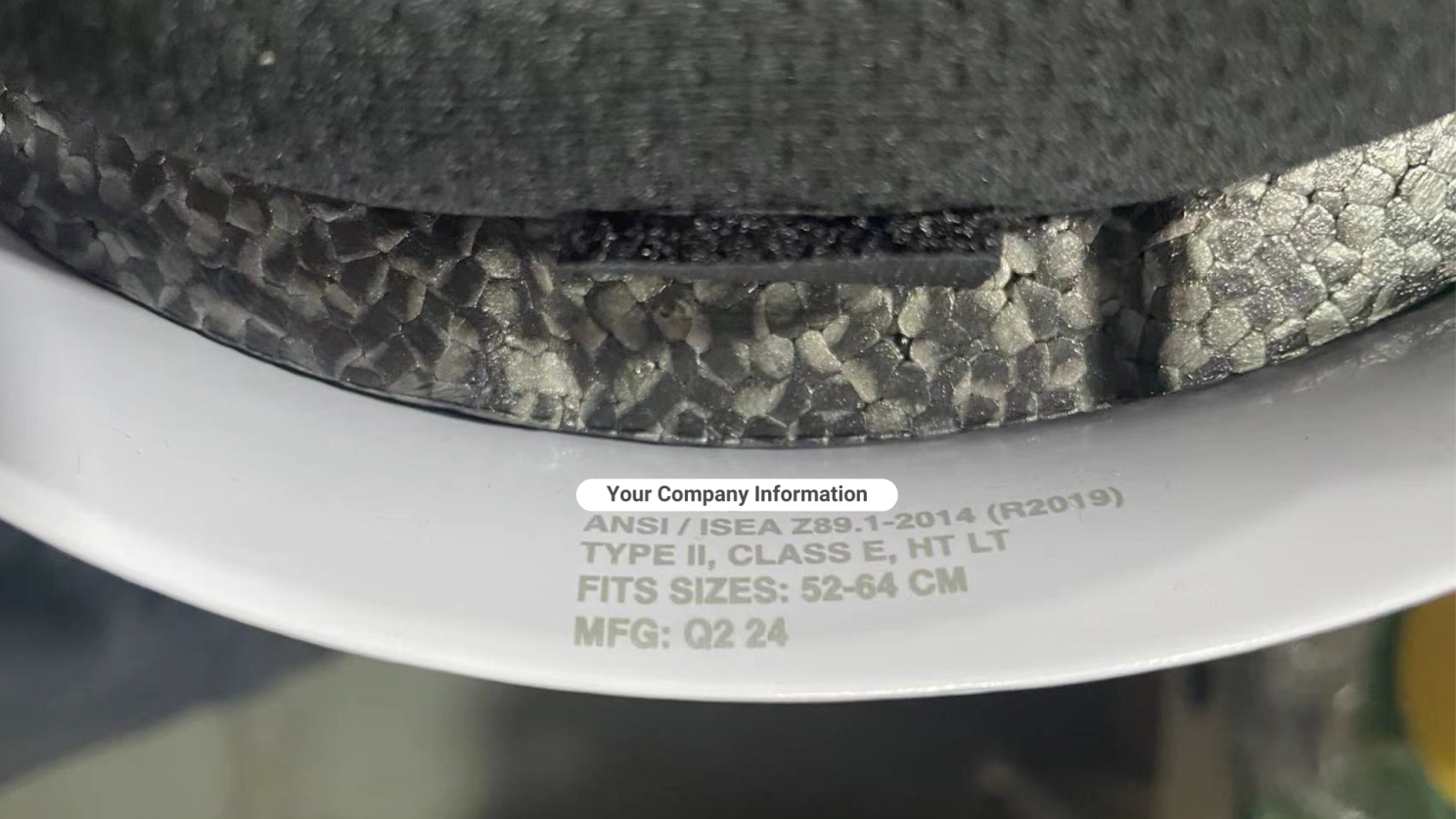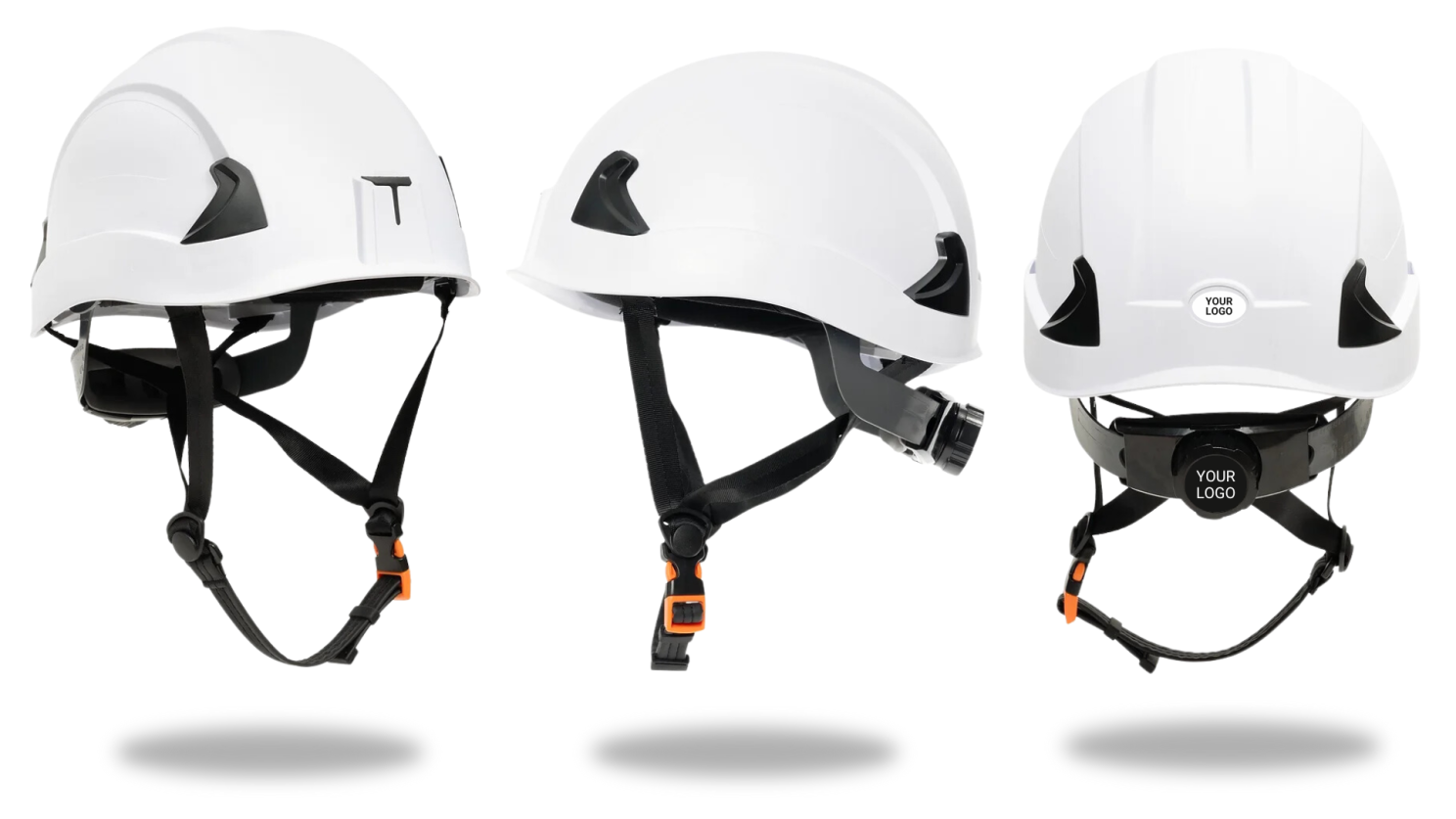In today’s market, Type 2 safety helmets have become a hot commodity, and with good reason. From construction sites to scaffolding work, head protection is crucial. However, with the increasing demand, counterfeit helmets have also risen claiming to meet Type 2 standards—at prices too good to be true. But don’t be fooled: these cheaper alternatives put workers at significant risk, and as the key person for sourcing safety helmets you play a pivotal role in driving the success of your product portfolio development and contributing to the company’s growth, it’s up to you to make informed decisions that prioritize safety over cost.
The True Cost of Safety
Why is Type 2 head protection so important? Type 2 helmets, unlike traditional hard hats, are designed to protect against lateral as well as top impacts, making them critical in environments where falls or side collisions are common. Under the ANSI Z89.1-2014 standard, Type 2 helmets must undergo rigorous testing for force transmission, apex penetration, flammability, and electrical insulation. These helmets are required by law to meet these safety standards, as referenced by OSHA’s 29 CFR 1910.135 and 29 CFR 1910.6 regulations.
Unfortunately, many manufacturers are cutting corners, selling helmets that claim to meet ANSI standards but do not pass the required safety tests. These helmets may lack the essential materials and design features, such as EPS (expanded polystyrene) liners, which are critical for absorbing and dispersing impact energy. EPS liners reduce the force that reaches the head during a collision, protecting workers from serious injury or worse.
Recognizing the Real Deal
When sourcing helmets, it’s vital to know what to look for. Real Type 2 helmets need to feature a combination of a hard outer shell and an EPS liner that absorbs shock from both lateral and top impacts. Without this essential feature, the helmet won’t provide the necessary protection.
Here are key factors to consider when evaluating safety helmets:
- EPS Liner: The EPS material is what makes a Type 2 helmet effective at absorbing lateral and top impact. If a helmet lacks this liner, it cannot meet the necessary safety standards. EPS material must be carefully developed, and getting it right can take years of testing, requiring manufacturers to adjust its density multiple times to achieve the right balance between comfort and safety.
2. Compliance with ANSI Z89.1-2014: Make sure the helmet is certified to meet this standard. It requires helmets to pass four crucial tests: Force Transmission, Apex Penetration, Flammability, and Electrical Insulation. A helmet that meets these tests will offer the protection your workers need.
3. Labeling and Certification: Every helmet that complies with the ANSI standard must be clearly marked with essential information, including the manufacturer’s name, the date of manufacture, and the helmet’s Type and Class. Always ask for third-party testing certificates from accredited US labs like COLTS and ICS to ensure you’re getting a genuine product not an outside US testing lab.
4. Durability and Temperature Resistance: Type 2 helmets must also withstand temperature extremes. Helmets for low-temperature applications (down to -30°C) or high-temperature environments (up to 60°C) should be labeled accordingly with “LT” or “HT” to reflect these certifications.
Don’t Risk Your Company’s Integrity
Sourcing the right helmet is not just a purchasing decision—it’s a responsibility. While a cheaper helmet may seem like a good deal initially, you could be putting your workers, and your company’s reputation, at risk. Non-compliant helmets can fail when needed most, leading to serious injuries, legal consequences, and financial losses.
Spending time to evaluate samples, test their weight, and feel their quality will help you distinguish a compliant helmet from a counterfeit one. Keep in mind, the best deals are those that ensure the highest level of safety without compromising on compliance.
At Aurora, Safety Comes First
At Aurora, we take work ethic seriously, which is why all our industrial helmets comply with ANSI Z89.1-2014, EN 12492, and EN 397 standards for shock absorption and penetration. Our helmets offer the best of both worlds: extreme comfort and superior protection, whether working at height or on the ground. And as a direct source, we offer competitive pricing without compromising on quality.
Safety isn’t just a product feature—it’s a commitment. Don’t let the price fool you into putting your workers at risk. Choose wisely and protect your team with the highest safety standards available.
➡️More Information about our M10 Low Entry Type II Safety Helmet
✉️Request a Quote/Sample at info@aurorahelmets.com
Follow us to continue staying updated on the latest safety trends.
• Instagram: Aurorahelmets
• Facebook: Aurora Sports Limited
• Youtube: Aurora Helmets
• Pinterest: Aurora Sports Limited

